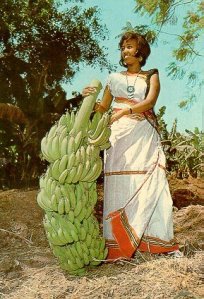 The Somali Media for Environment, Science, Health and Agriculture (SOPMESHA) delighted to circulate that the Federal Government of Somalia has exported the highest number of banana in a decade from Mogadishu seaport to Kuwait and United Arab Emirates.
The Somali Media for Environment, Science, Health and Agriculture (SOPMESHA) delighted to circulate that the Federal Government of Somalia has exported the highest number of banana in a decade from Mogadishu seaport to Kuwait and United Arab Emirates.
The Minister for Agriculture Abdi Ahmed Mohamed Baafo said that the farmers have jointly exported to outside markets so as to restore the trade relations of Somalia with the world. The exported bananas were harvested from Bal’ad, Afgoye, Awdegle and Janale districts of Middle Shabelle and Lower Shabelle regions. Somalia banana industry was one of the flourishing and largest exporters in East Africa, the production ceased during the 1991 civil strife in the country.
The plantation system began in 1919, with the arrival in Somalia of Prince Luigi Amedeo of Savoy, duke of Abruzzi, and with the technical support of the fascist administration of Governor Cesare Maria de Vecchi de Val Cismon. The Shabeelle Valley was chosen as the site of these plantations because for most of the year the Shabeelle River had
sufficient water for irrigation. The plantations produced cotton (the first Somali export crop), sugar, and bananas. Banana exports to Italy began in 1927, and gained primary importance in the colony after 1929, when the world cotton market collapsed. Somali bananas could not compete in price with those from the Canary Islands, but in 1927 and
1930 Italy passed laws imposing tariffs on all non-Somali bananas.
These laws facilitated Somali agricultural development so that between 1929 and 1936 the area under banana cultivation increased seventeenfold to 3,975 hectares. By 1935 the Italian government had constituted a Royal Banana Plantation Monopoly (Regia Azienda Monopolio Banane–RAMB) to organize banana exports under state
authority. Seven Italian ships were put at RAMB’s disposal to encourage the Somali banana trade. After World War II, when the United Nations (UN) granted republican Italy jurisdiction over Somalia as a trust territory, RAMB was reconstituted as the Banana Plantation Monopoly (Azienda Monopolio Banane–AMB) to encourage the revival of a
sector that had been nearly demolished by the war.
Plantation agriculture under Italian tutelage had short-term success, but Somali products never became internationally competitive. In 1955 a total of 235 concessions embraced more than 45,300 hectares (with only 7,400 hectares devoted to bananas), and produced 94,000 tons of bananas. Under fixed contracts, the three banana trade associations sold their output to the AMB, which exacted an indirect tax on the
Italian consumer by keeping out cheaper bananas from other sources.
The protected Italian market was a mixed blessing for the Somali
banana sector. Whereas it made possible the initial penetration by Somali bananas of the Italian marketplace, it also eliminated incentives for Somali producers to become internationally competitive or to seek markets beyond Italy.
Pingback: Somalia exports banana to Middle east and Europ...
Pingback: Somalia exports banana to Middle east and Europ...